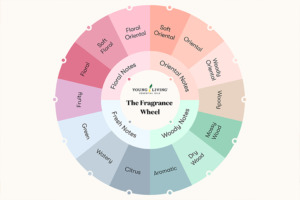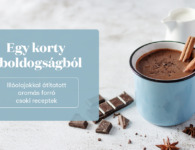Welcome to the aromatic world of scent wheels! If you’ve ever wondered how to create delightful blends of essential oils, understanding scent wheels is the key. Originally developed by perfumiers to recommend the perfect fragrance blends, scent wheels have since been adopted by candle makers, aroma enthusiasts, and now, by you! In this blog post, we will take a closer look at scent wheels, the various fragrance families, and techniques to create harmonious essential oil blends. Let’s dive in!
What is the Scent Wheel?
The scent wheel is a circular diagram that depicts scent families and subfamilies, helping us understand how different scents interact and complement each other. Originally used by perfumiers, the concept has expanded to include candle makers, essential oil enthusiasts, and other artisans. By using the scent wheel as your guide, you can identify scents that blend well together and avoid clashes in your aromatic creations.

What are the Scent Families?
Within the scent wheel, scents are grouped together based on their similarities and complementary differences. There are four key scent families: floral, oriental, woody, and fresh. Let’s explore each family.
1. Floral Family
The floral family is characterised by its delicate and feminine notes. It includes fruity and floral subfamilies, such as Lavender, Geranium, and Ylang Ylang. These oils bring forth a sense of tranquillity, grace, and romance, making them perfect for relaxation and creating a soothing atmosphere.

2. Oriental Family
The oriental family is rich and exotic, evoking a sense of mystery and allure. Within this family, you’ll find soft oriental and woody oriental subfamilies. Essential oils like Frankincense, Myrrh, and Patchouli belong to this family, and they lend an air of spirituality and grounding to your blends.

3. Woody Family
The woody family brings a sense of warmth and strength. It encompasses woody and mossy wood subfamilies, including Cedarwood, Sacred Sandalwood, and Vetiver. These oils are known for their earthy and grounding qualities, making them ideal for meditation or creating a cosy ambiance.

4. Fresh Family
The fresh family offers a vibrant and invigorating experience. This family includes aromatic, citrus, water, green, and fruity subfamilies. Essential oils such as Peppermint, Lemon, Eucalyptus Globulus, and Grapefruit belong here, adding a refreshing touch to your blends.

How to Pair Scents
Now that we’ve explored the scent families, let’s uncover some techniques to create harmonious blends using the scent wheel as your guide.
1. Neighbour Fragrance Technique
This technique involves pairing subfamilies that are side by side on the scent wheel. For example, combining floral and fruity notes like Rose and Bergamot can create a beautifully balanced blend with a touch of sweetness and freshness.
2. Opposite Fragrance Technique
The opposite fragrance technique involves pairing subfamilies that appear directly across each other on the scent wheel. This creates a contrasting yet complementary blend. For instance, blending the warmth of woody notes like Pine with the freshness of citrus notes like Lime can result in a captivating fragrance.
3. Triangle Fragrance Technique
In this technique, three subfamilies that form a triangle on the scent wheel are combined. For instance, you could blend the floral notes of Palmarosa, the woody notes of Idaho Grand Fir, and the fresh notes of Orange to create a well-rounded and harmonious aroma.

With the help of scent wheels, you can embark on an aromatic adventure, exploring the art of blending essential oils. Understanding the scent families and using techniques like the neighbour, opposite, and triangle methods will enable you to create captivating and unique blends. So, grab your favourite Young Living essential oils, let your creativity flow, and immerse yourself in the world of scents. Happy blending!
Like this blog and let us know your favourite essential oil combinations!




















No comments